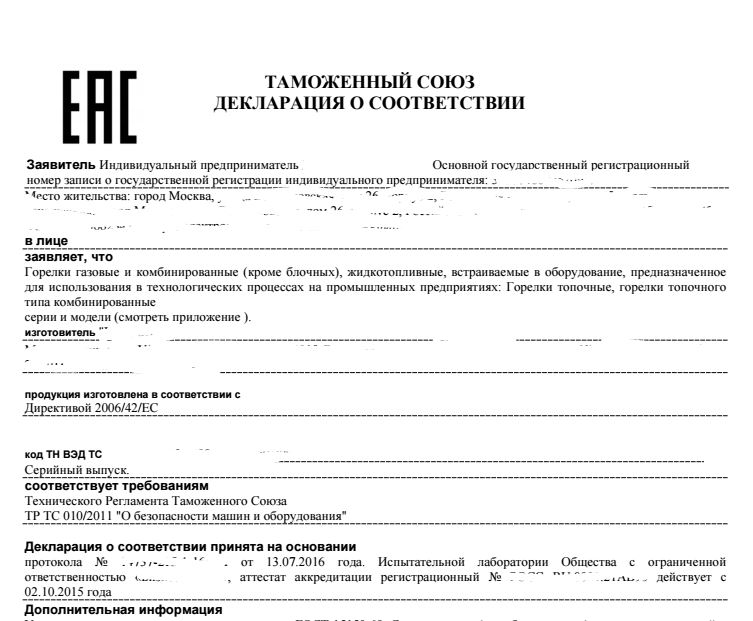The EAC Declaration of Conformity is the most common document across all CU TR regulations, required for a wide range of products. Among EAC approvals, it is considered the most straightforward to obtain.
What is an EAC Declaration?
The EAC Declaration of Conformity is the most common approval under CU TR regulations, confirming that a product meets the technical requirements for sale in the EAEU. It must always be issued on behalf of a local Applicant and covers a wide range of products—from cosmetics and fashion to complex industrial systems and machinery.
What documents are required?
To issue a Declaration, you need manufacturer documentation: technical documentation, user manuals, internal or third party testing and labeling in Russian. In addition, there are specific requirements depending on the product type: industrial products typically require a Technical Passport and a Justification of Safety, while other goods may need testing in accredited EAEU laboratories.
How long is it valid?
Validity options are single contract/shipment, 1, 3, or 5 years—with 5 years being the most common choice. The requirements for each option are essentially the same in the vast majority of CU TR regulations.
Does every component need an EAC Declaration of Conformity?
Not necessarily. When components are exported as part of a system or assembly, a Joint Declaration can cover the whole set, avoiding the need to certify each item individually, even if some of these components would normally require stricter approval, such as an EAC Certificate. This must be assessed on a case-by-case basis, but it is a very important factor when calculating the overall cost of a project. However, if the components are sold separately on the market, they must each have their own EAC approval.
What happens if I don’t have it?
If there is no Declaration at all, customs will block the goods and prevent them from entering the EAEU, with consequent fines and additional customs charges. On the other hand, if a Declaration has been issued incorrectly and the product does not comply with the applicable regulations, the authorities may initiate a non-conformity procedure, which could lead to product recall and similar corrective measures.
What’s the difference with an EAC Certificate of Conformity?
An EAC Certificate of Conformity requires mandatory validation by a certification body, together with testing in accredited EAEU laboratories. In addition, certified products are subject to an annual audit and fees, making the procedure more demanding than the Declaration.
Free Certificates Review
- Validation of your current certificates
- Regulatory update check
- Guidance on renewal
